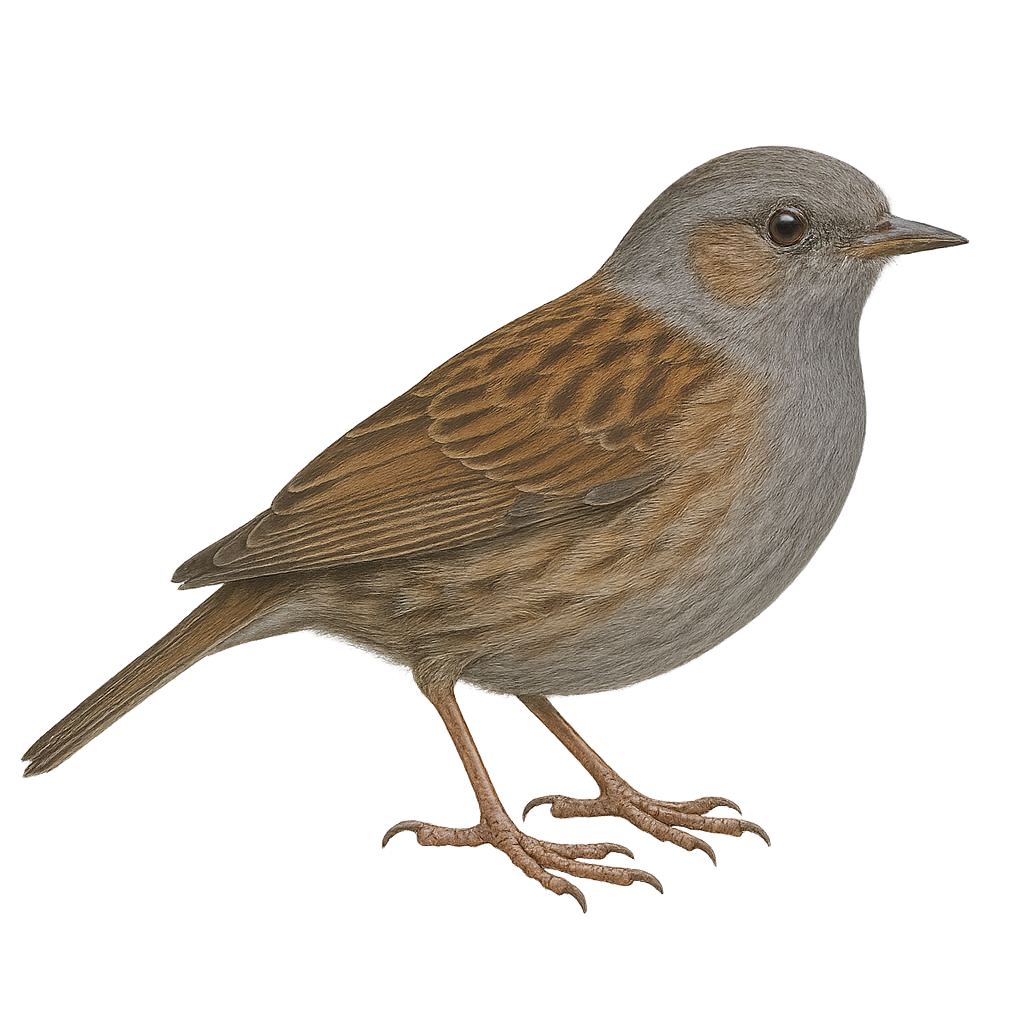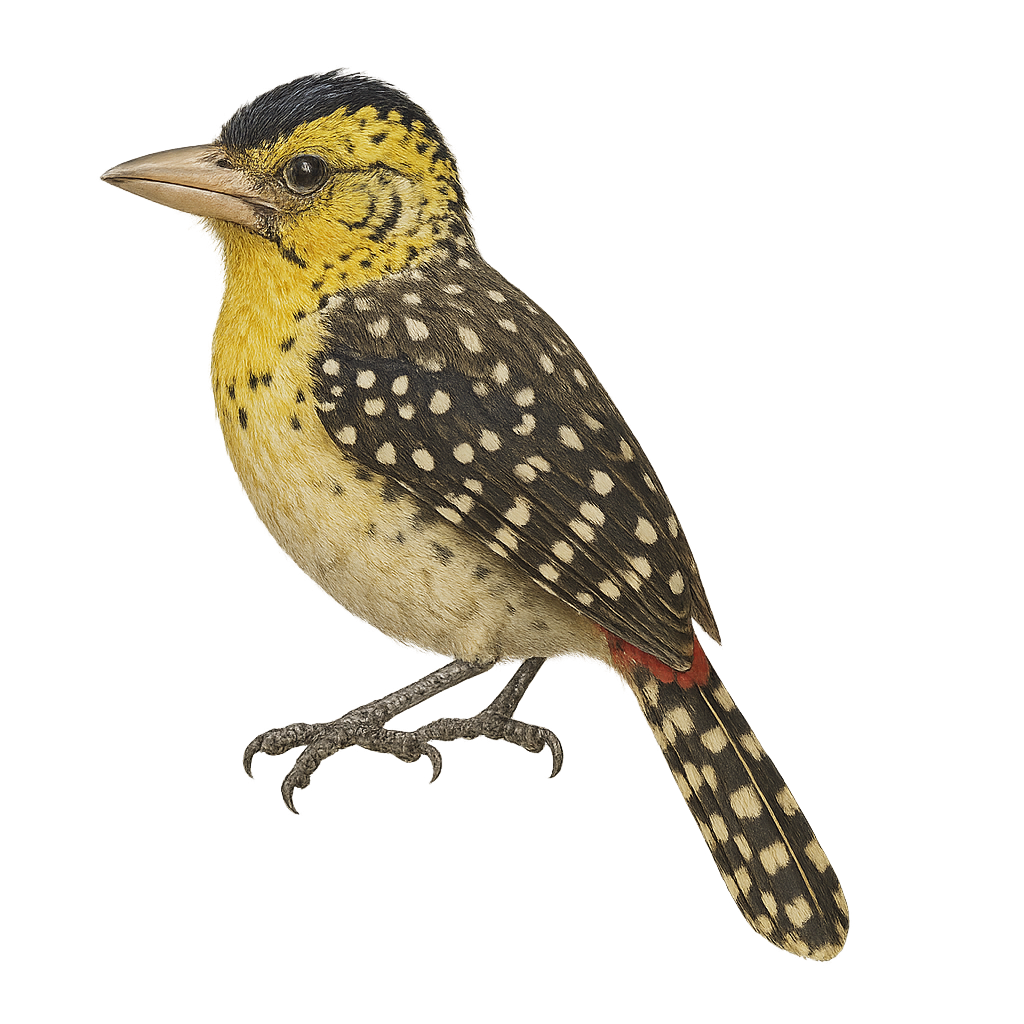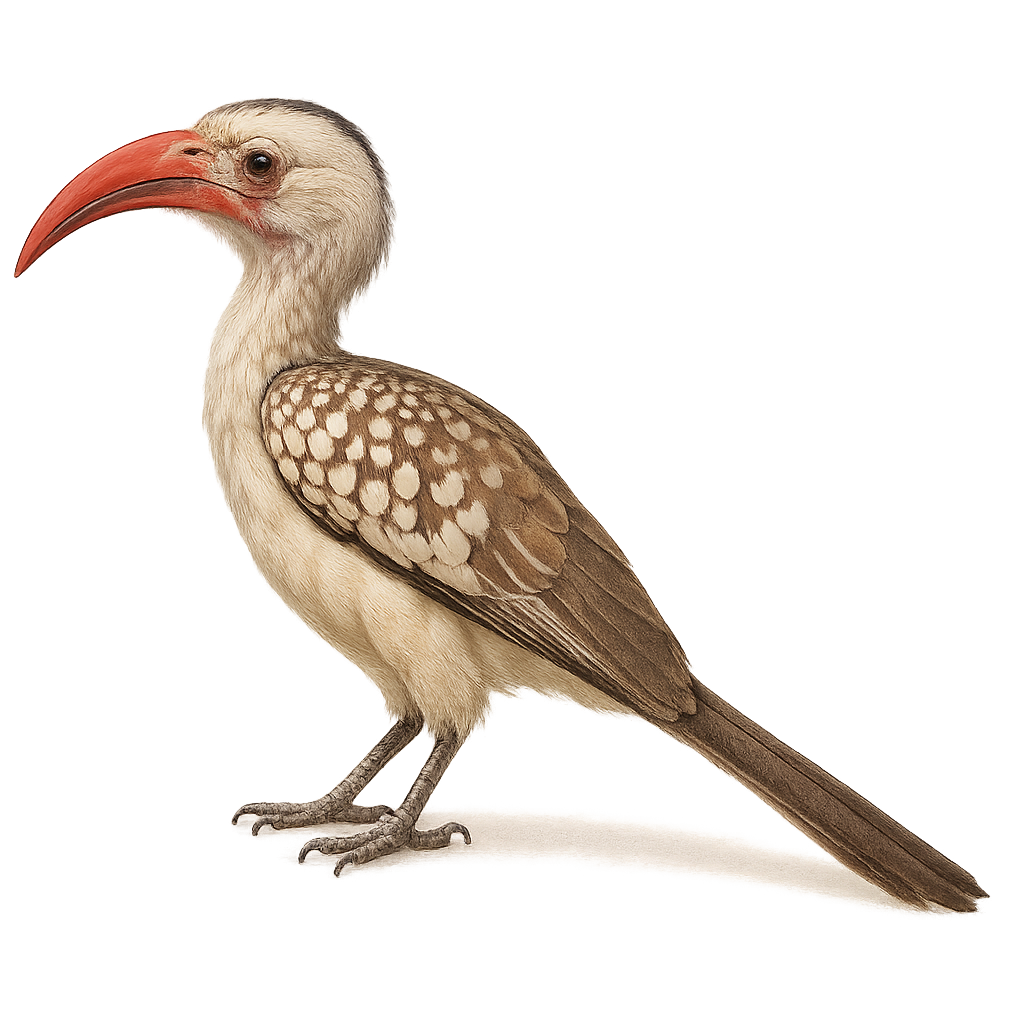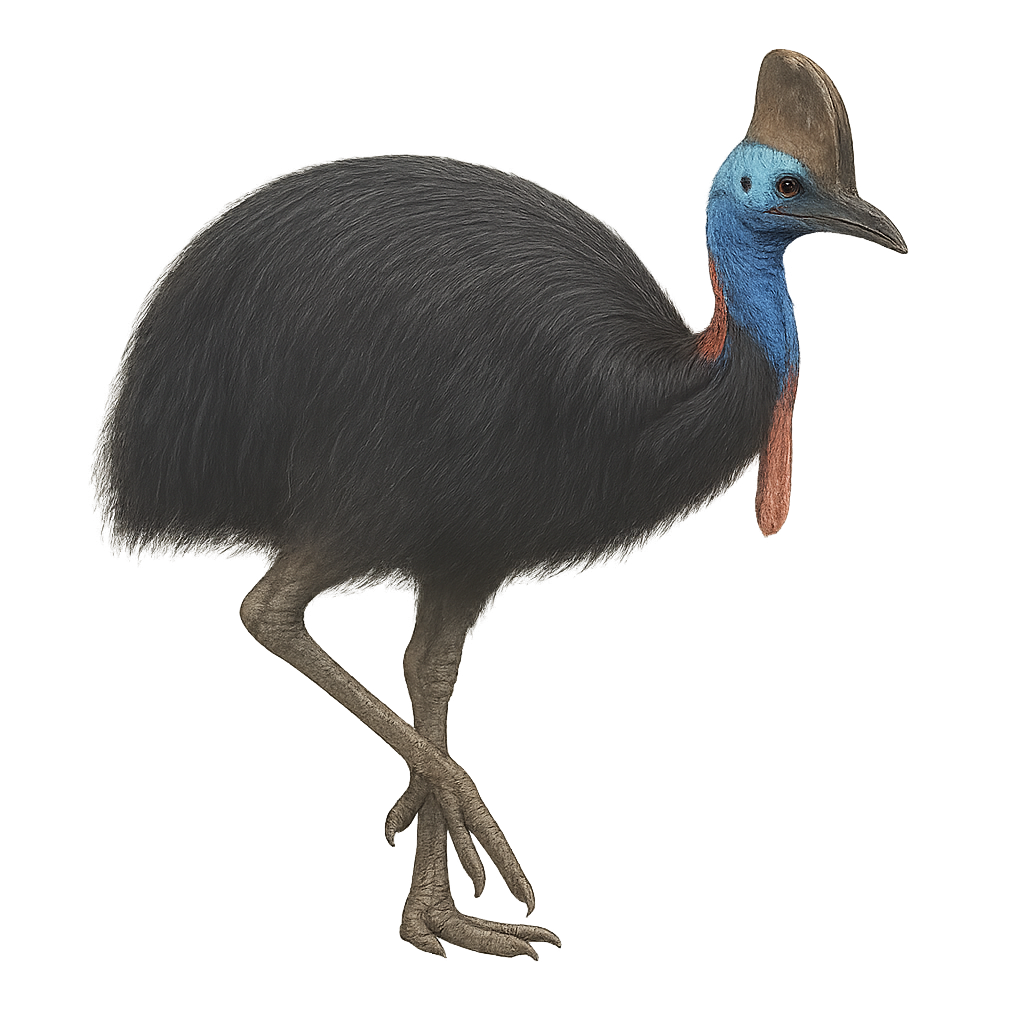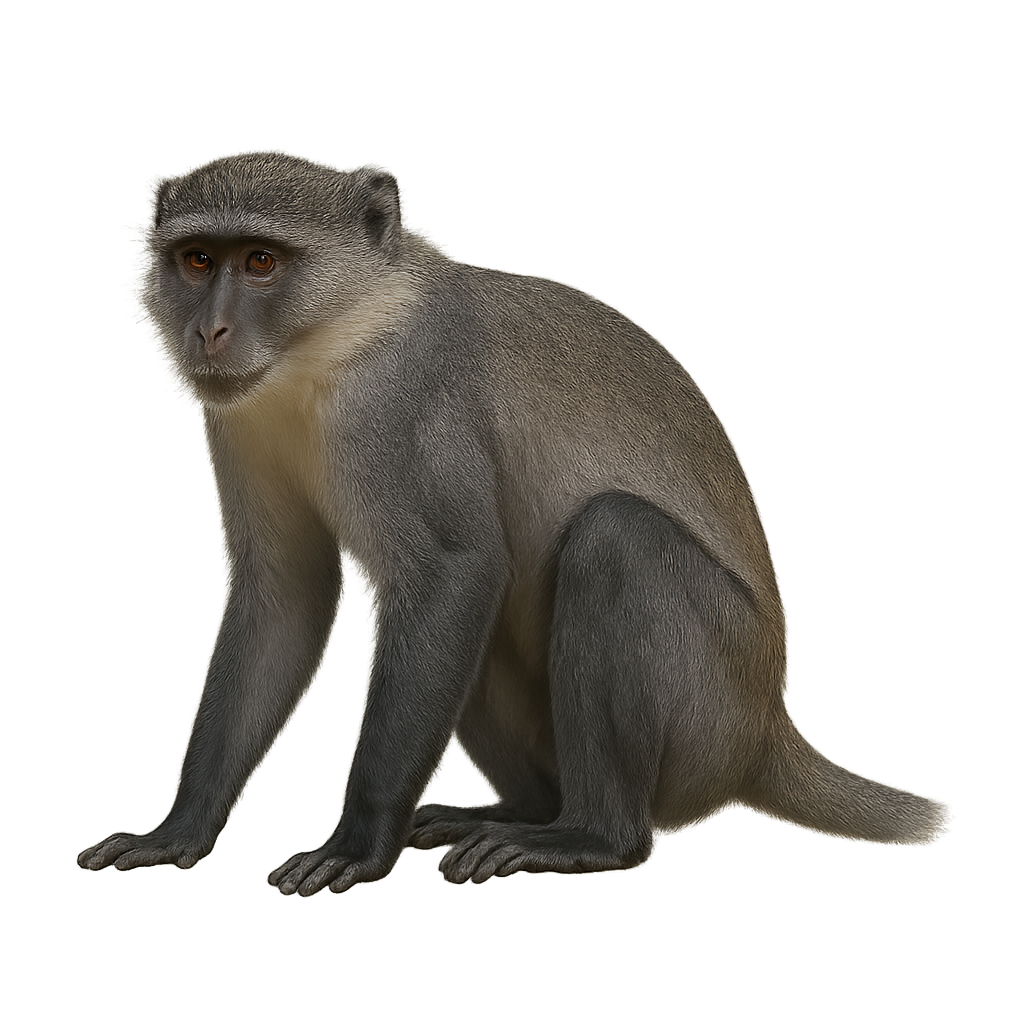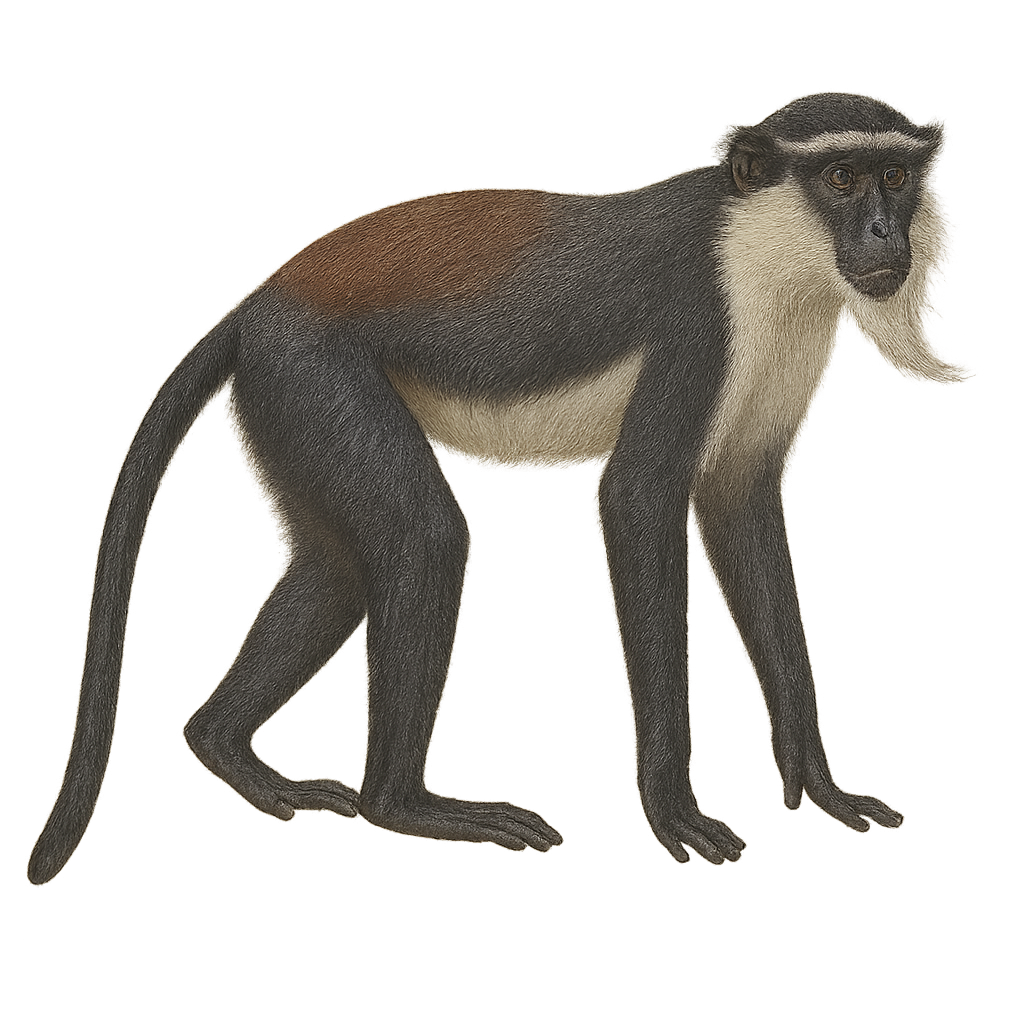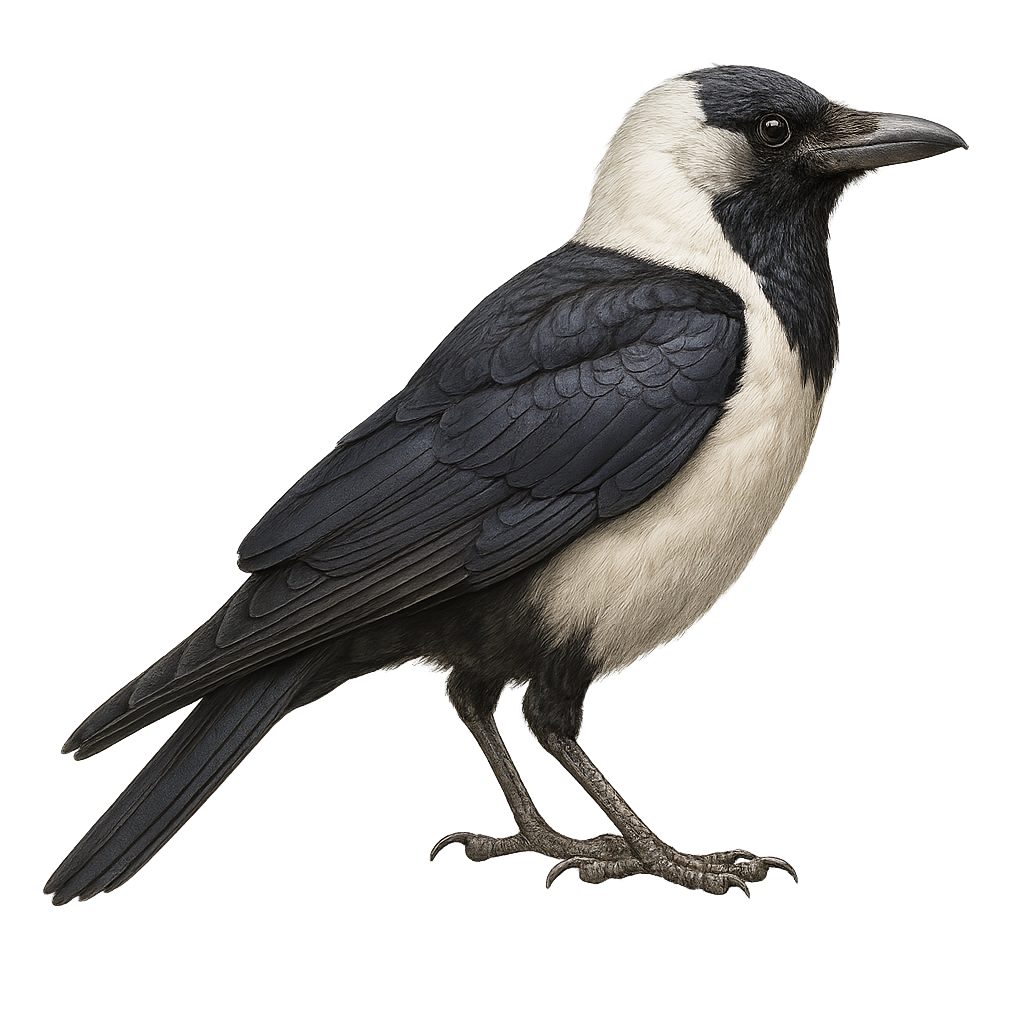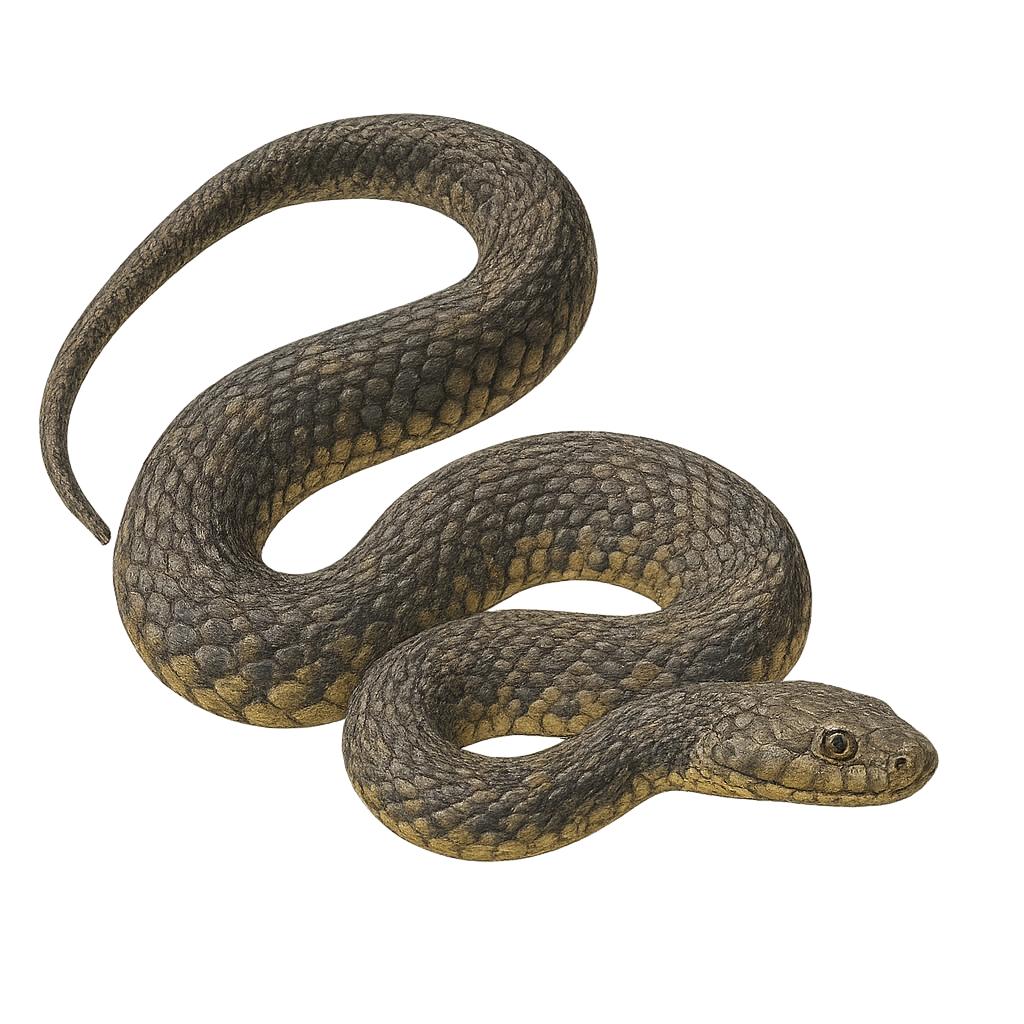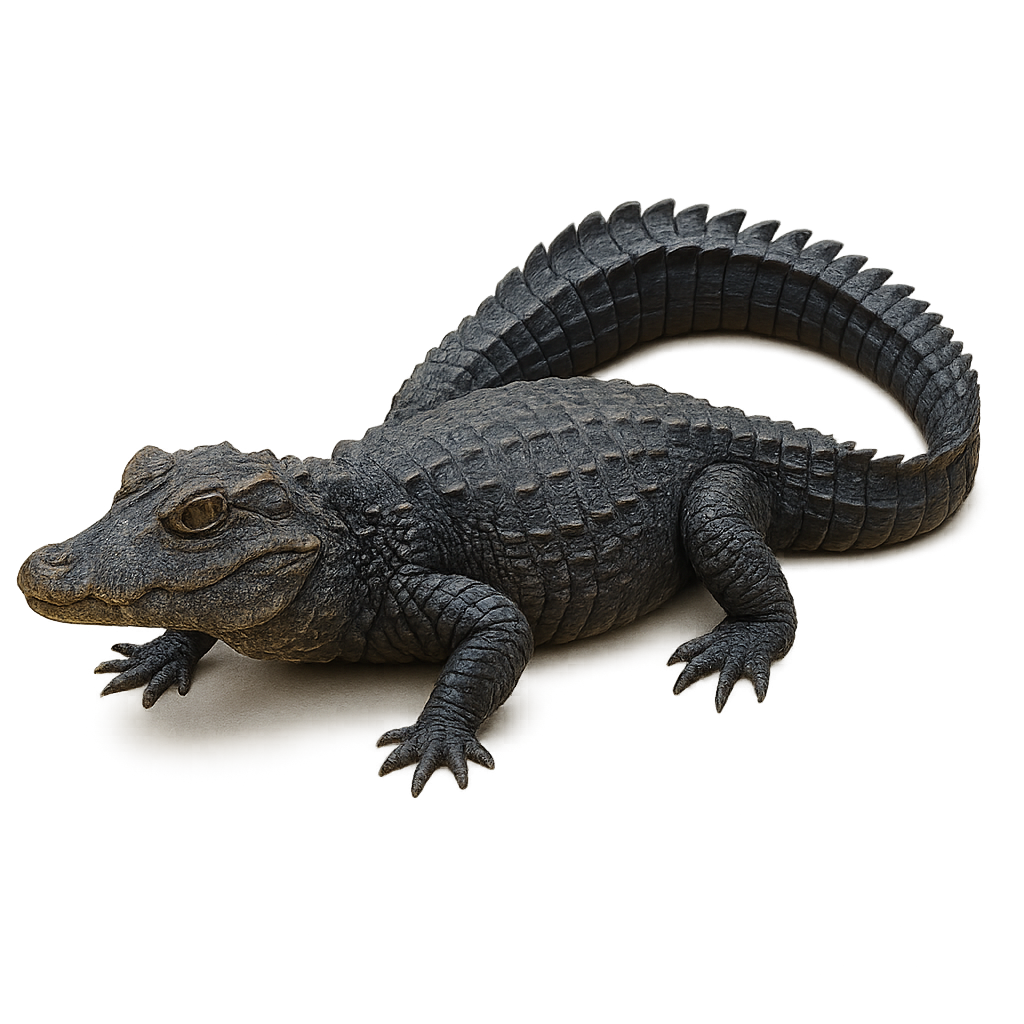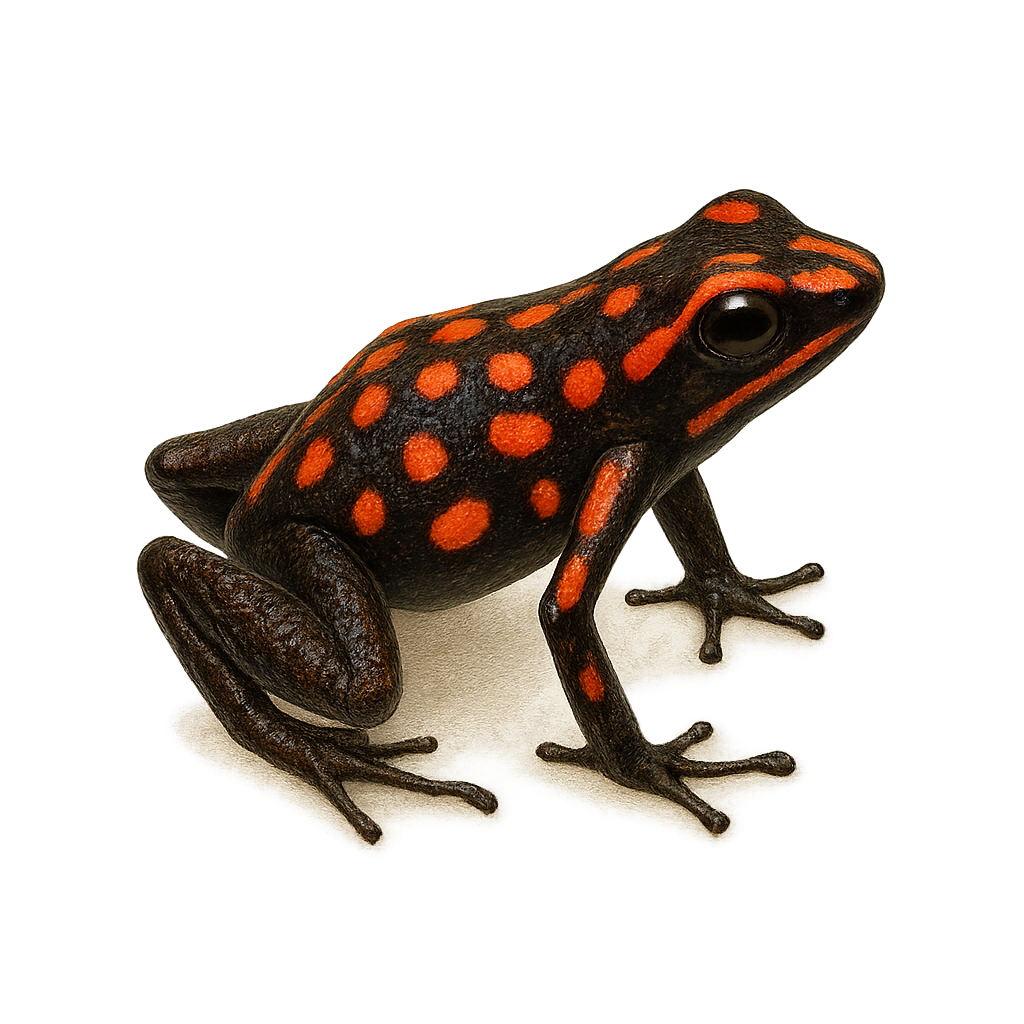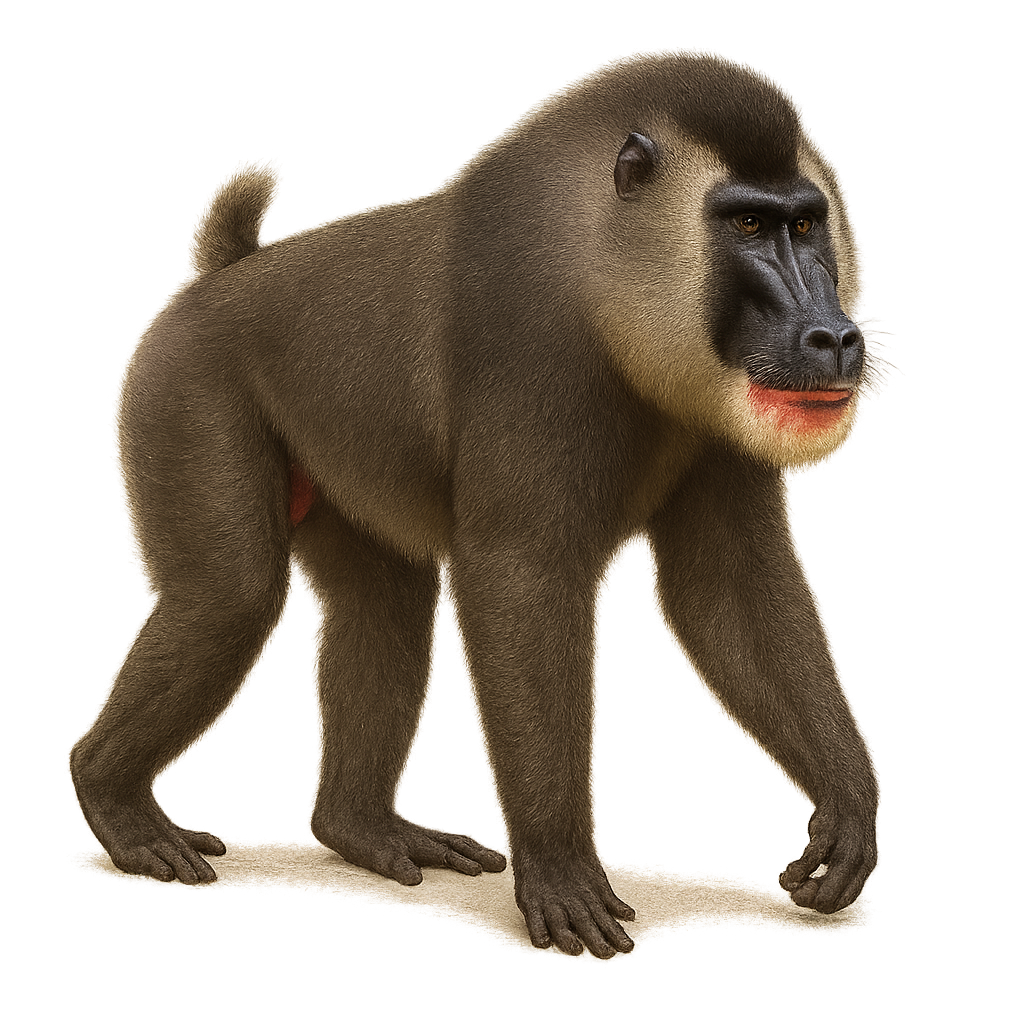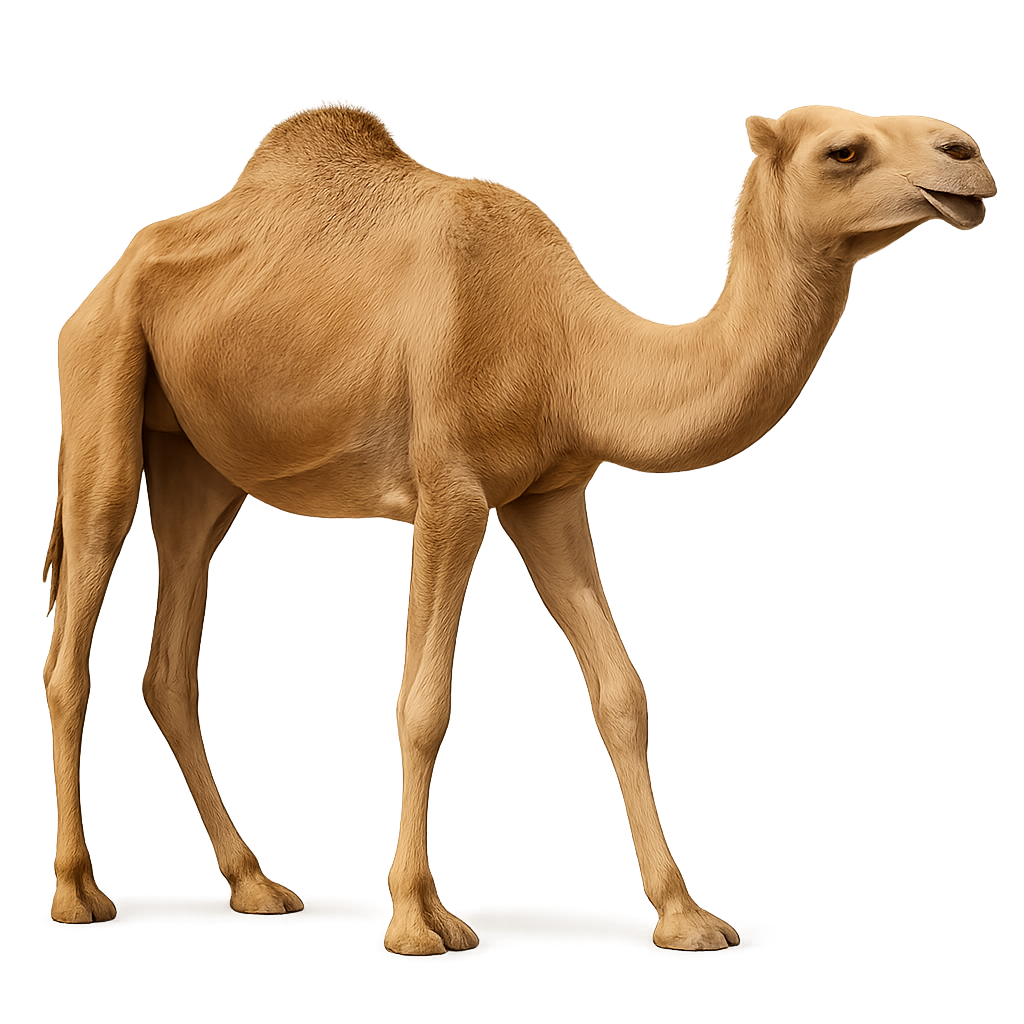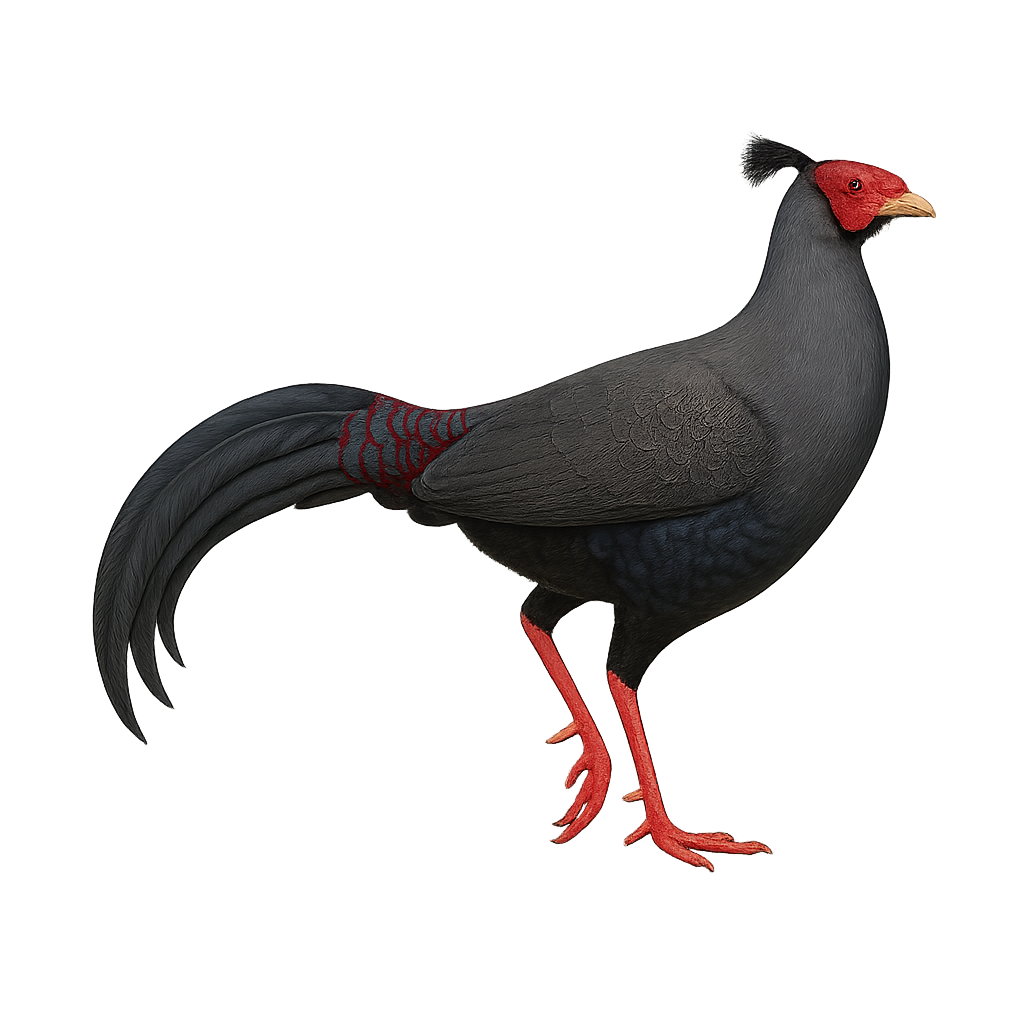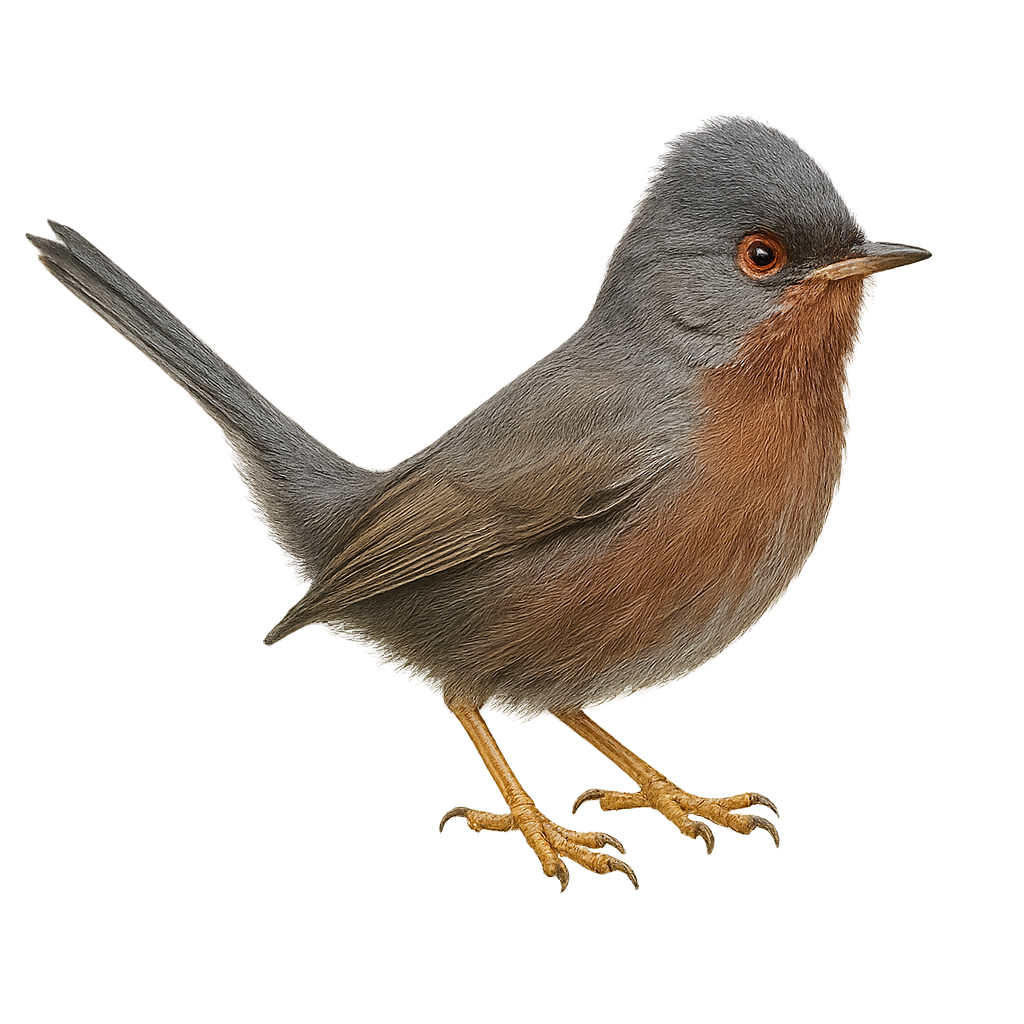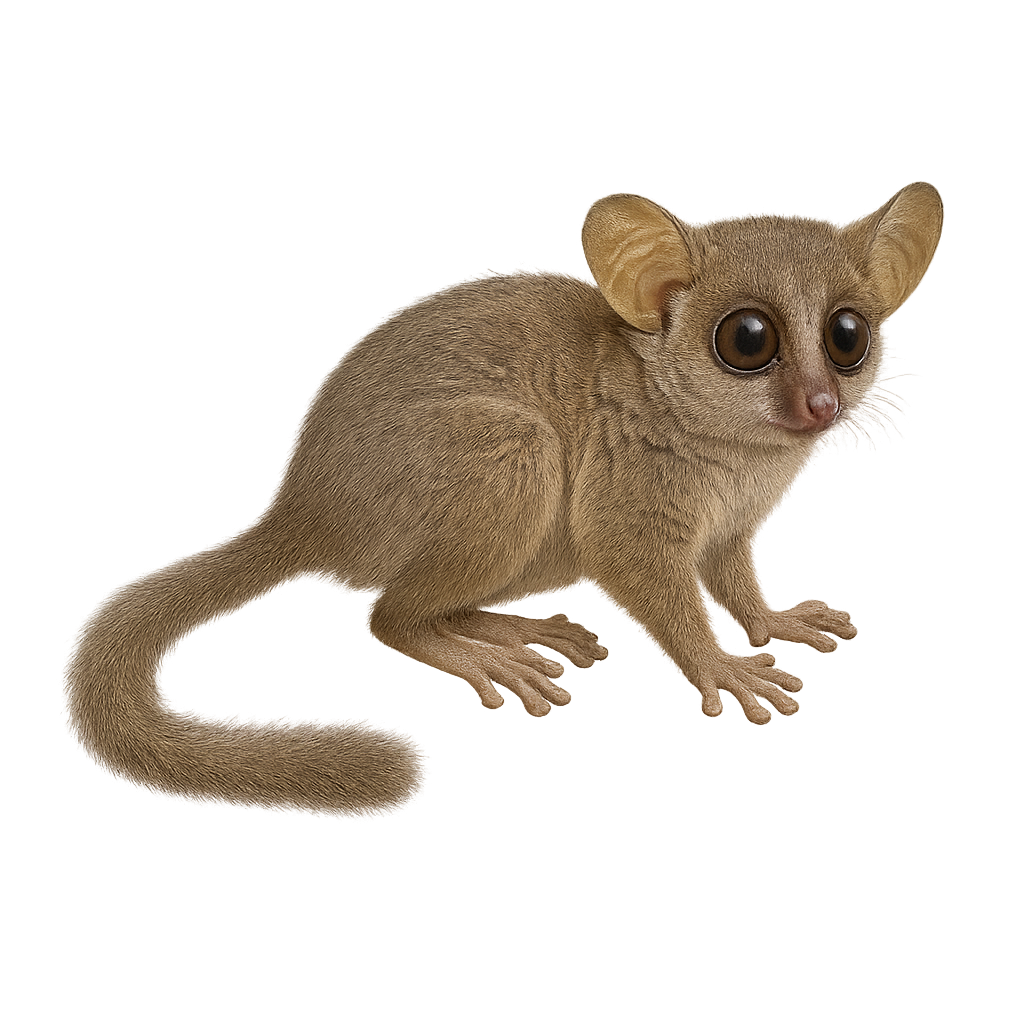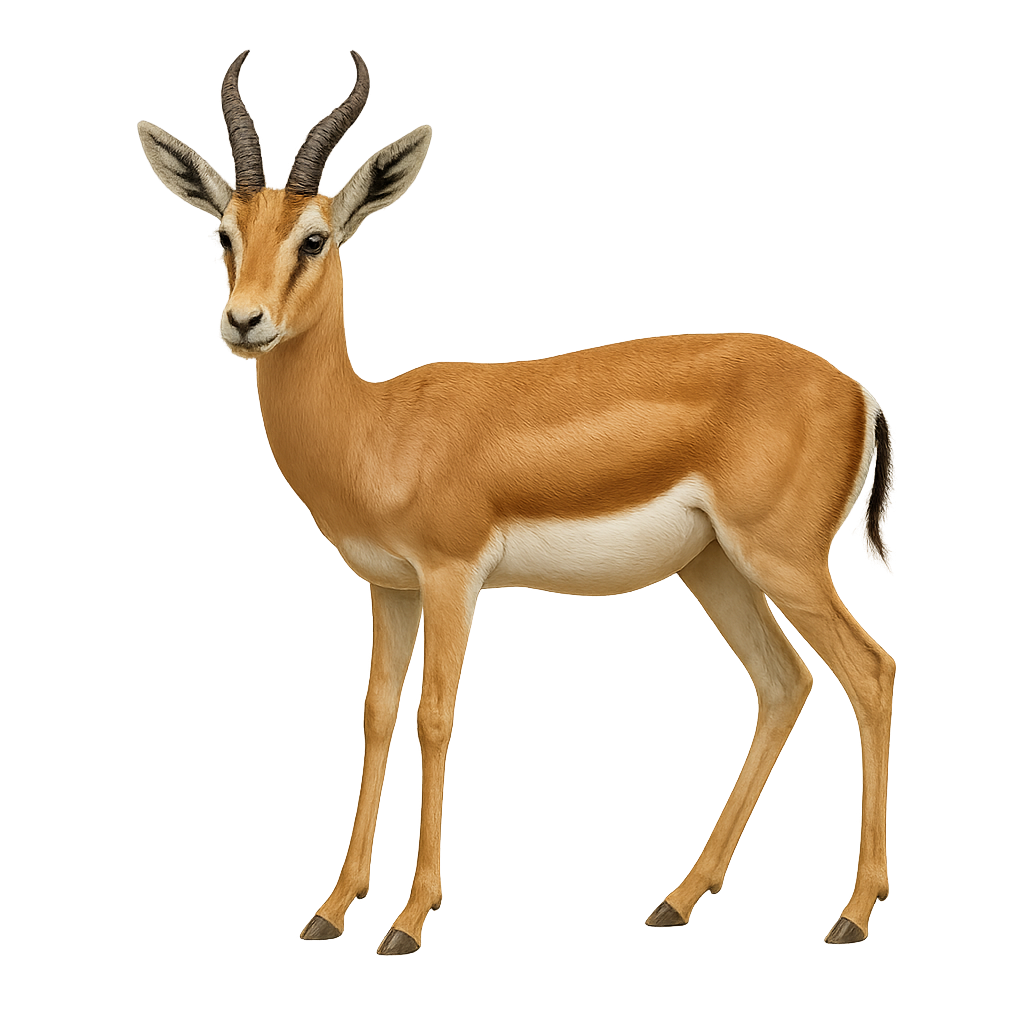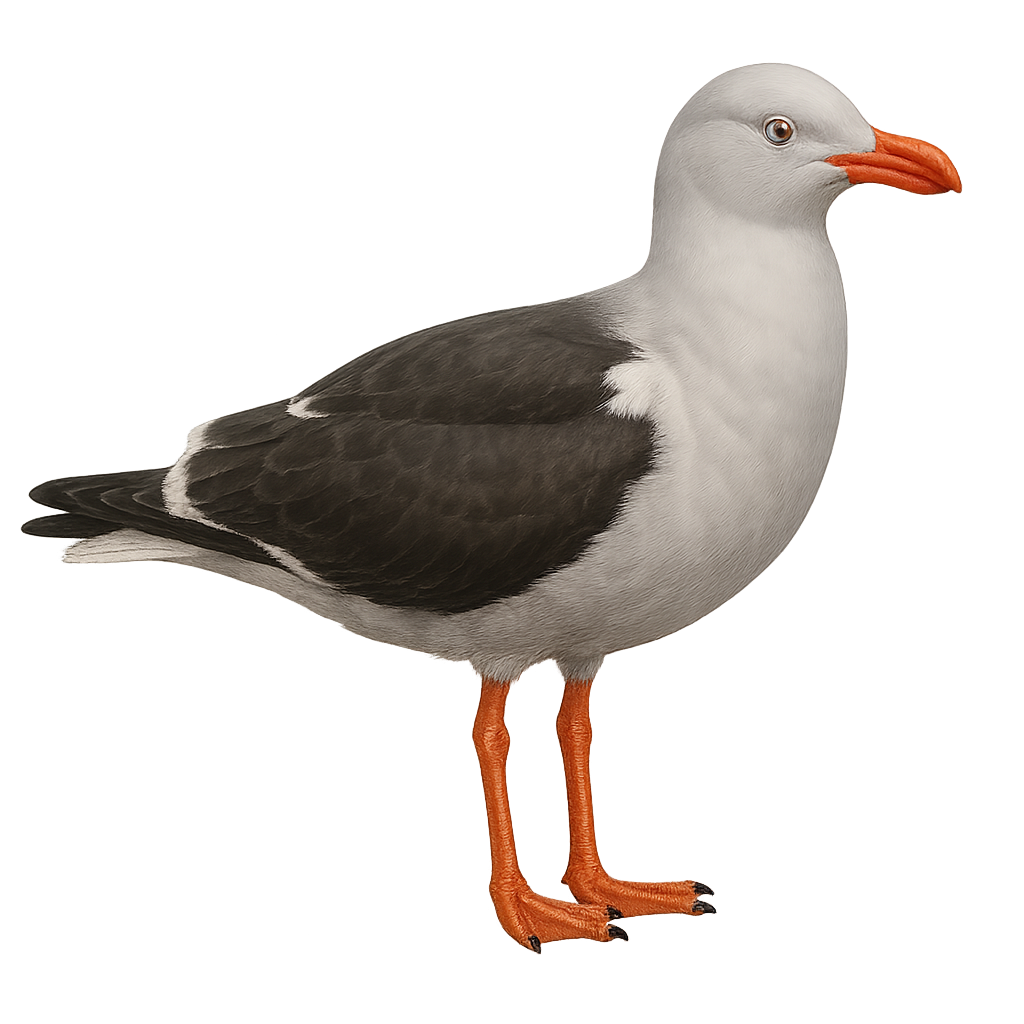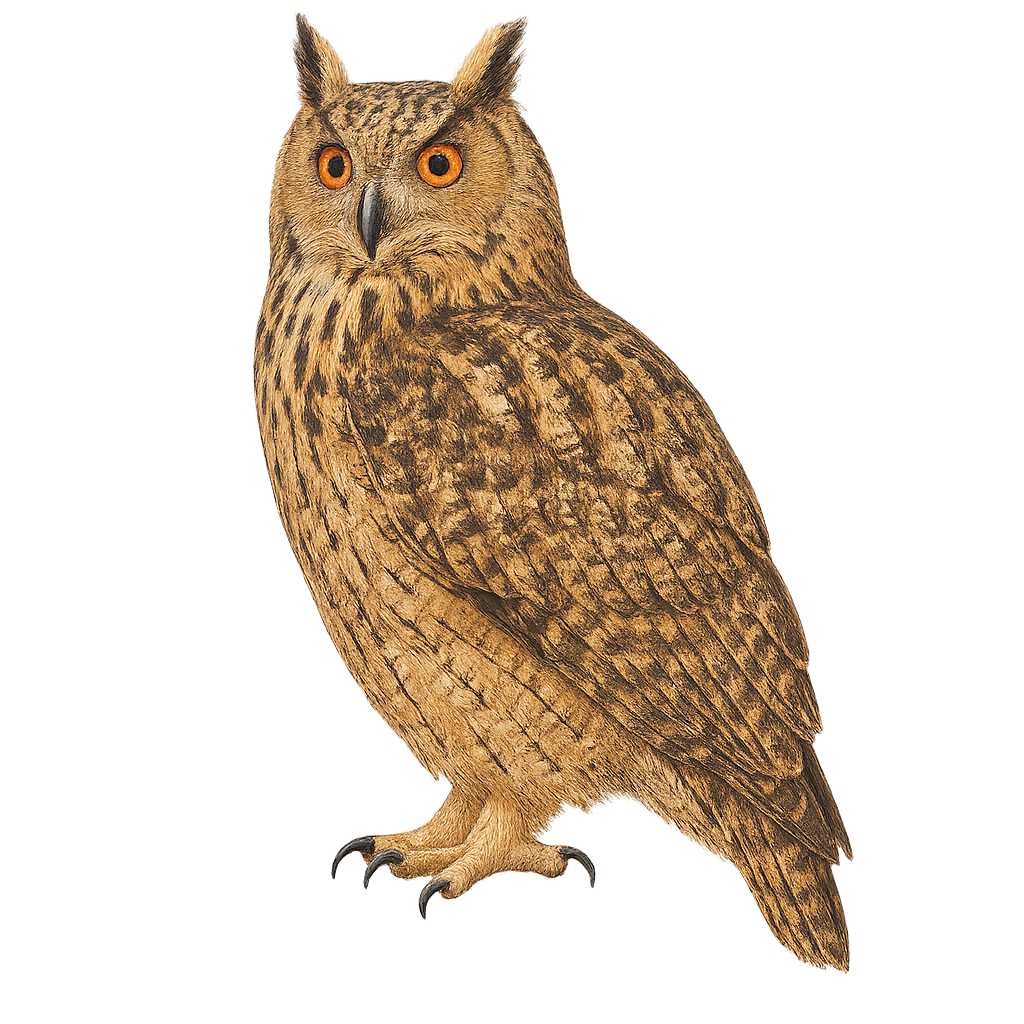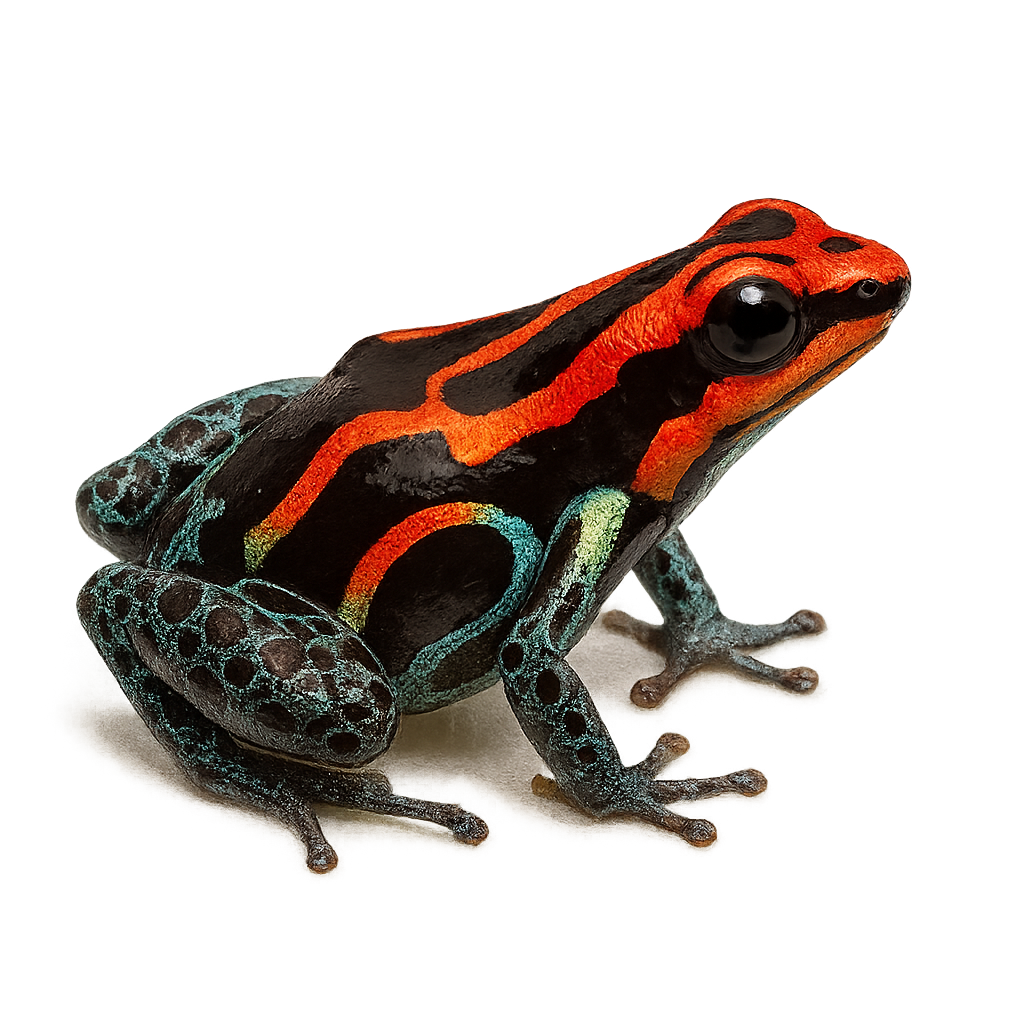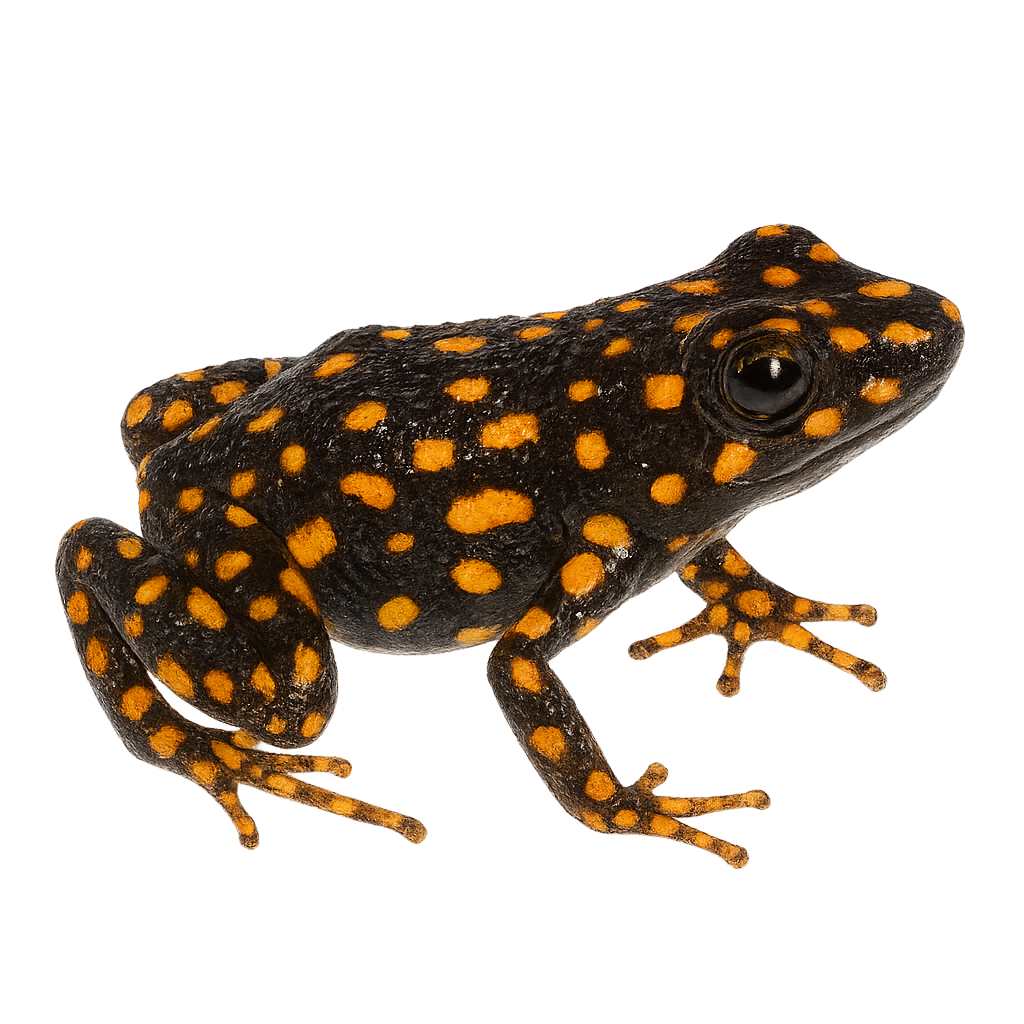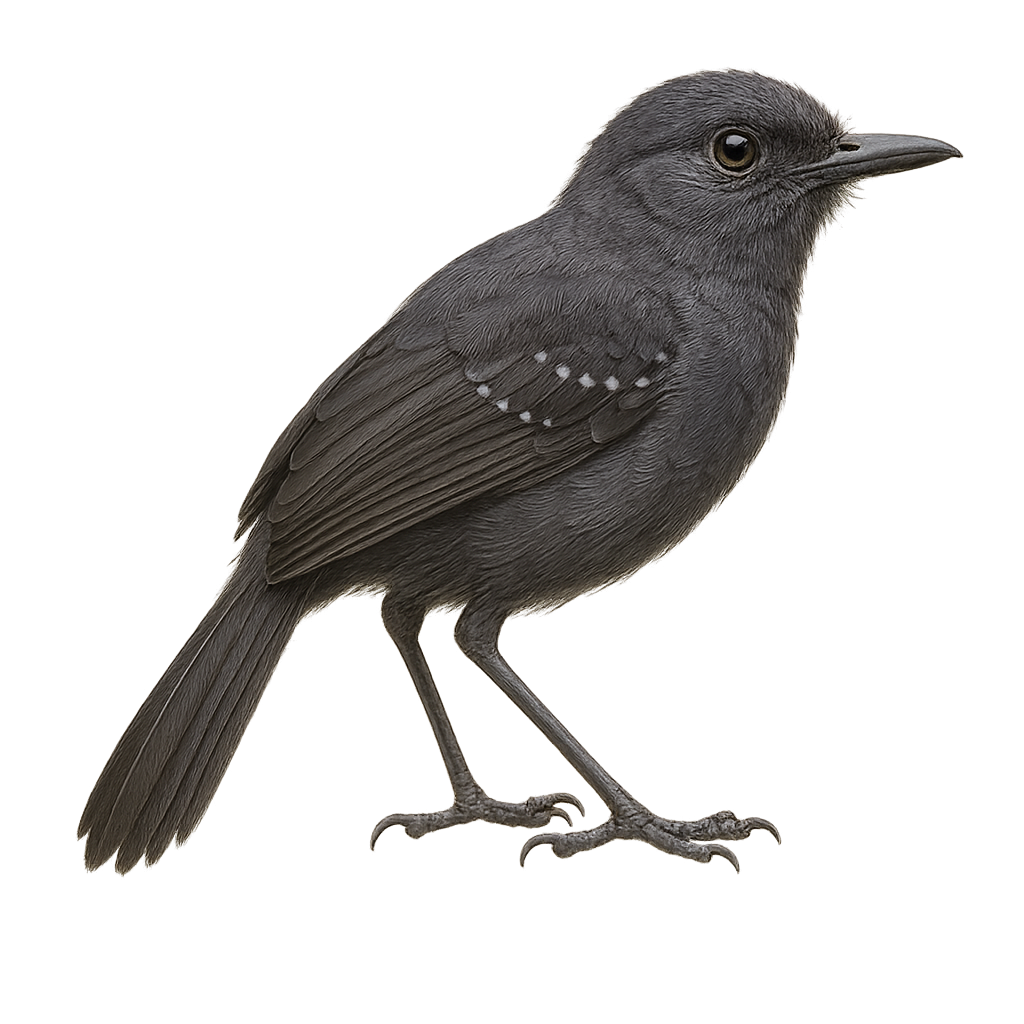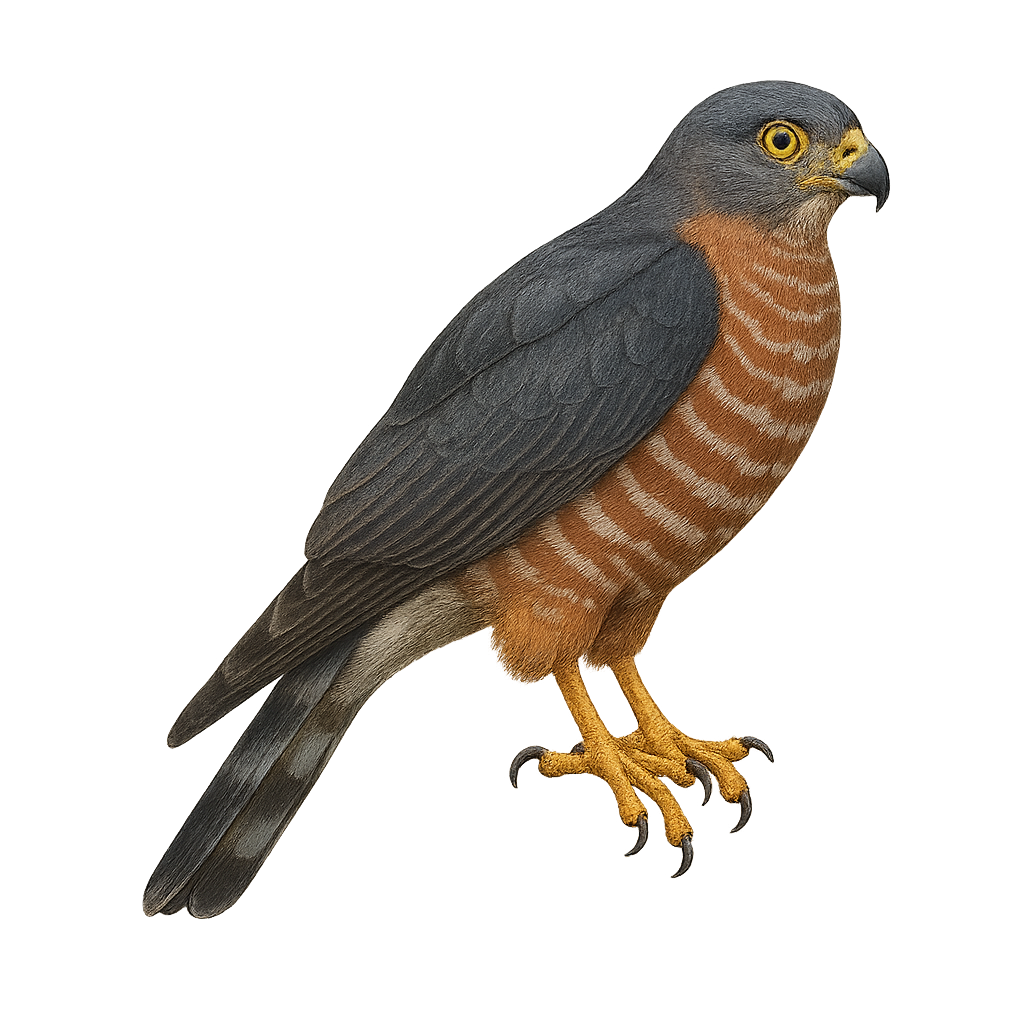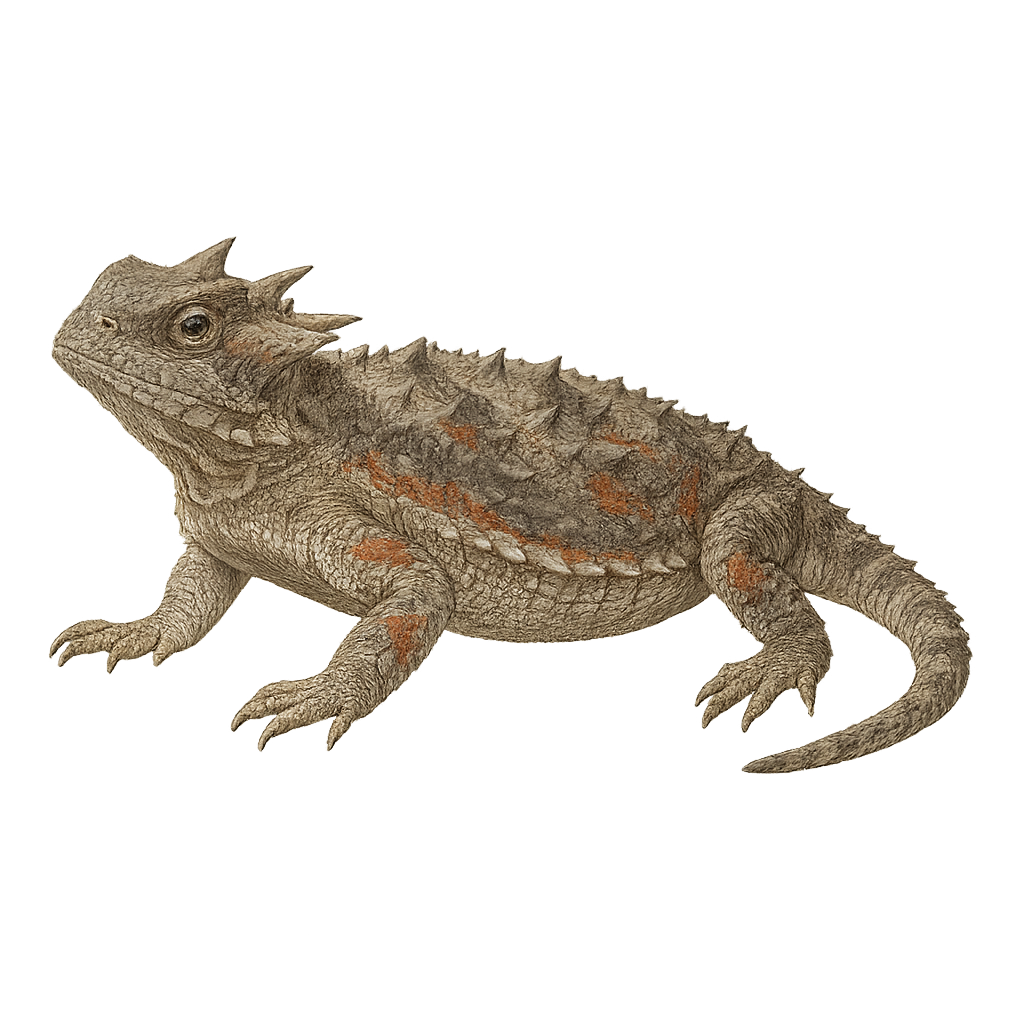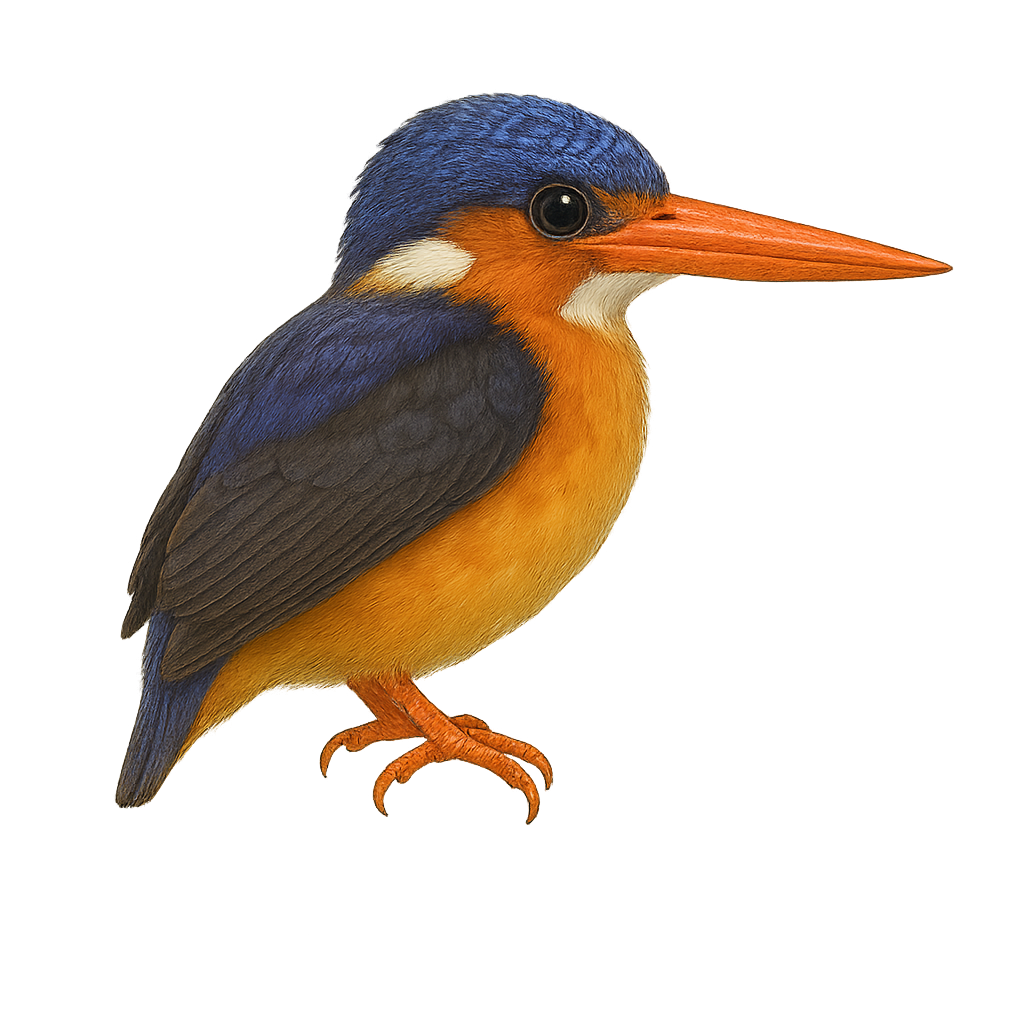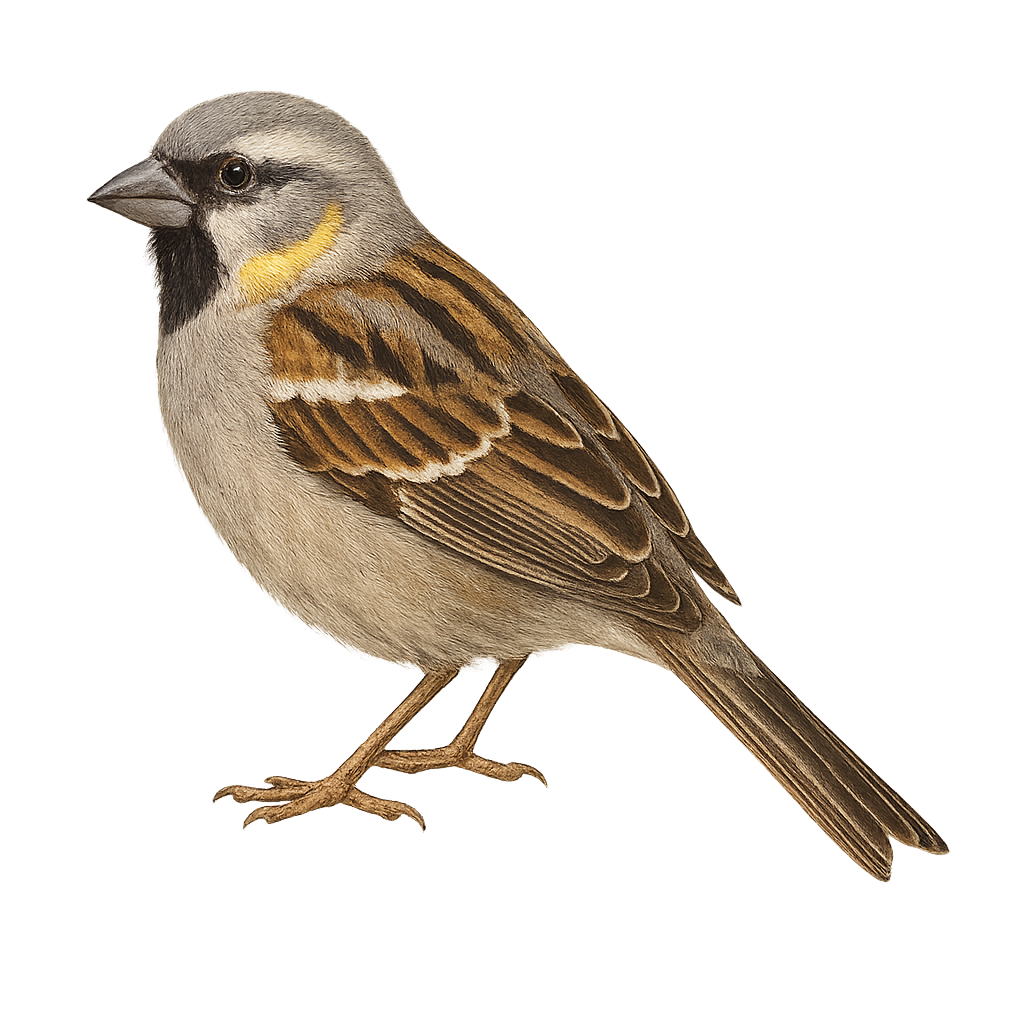The dunnock is a small passerine, 12–14 cm long, with streaked brownish-grey plumage, an unobtrusive posture and a quick, darting flight. It inhabits hedgerows, woodland edges and gardens, feeding on seeds and insects searched for on the ground or in foliage. During the breeding season, the male sings from a low perch to attract the female and defend a compact territory.
The D'Arnaud's Barbet is a colorful and fascinating bird native to the wooded regions and savannas of East Africa. This medium-sized bird, measuring about 20 cm in length, is easily recognizable by its bright plumage, featuring shades of yellow, black, and white, with distinctive red patches on its head and neck. It is often seen in small groups or pairs, feeding mainly on insects, fruits, and seeds. The D'Arnaud's Barbet is known for its melodious and repetitive song, which it uses to mark its territory. Although relatively common in its natural habitat, it is essential to preserve its ecosystems to ensure its long-term survival.
The Dunlin is a small, graceful wader, easily recognizable by its plumage that changes with the seasons, transitioning from gray-brown in winter to more contrasting black and white tones during breeding. This small bird primarily inhabits coastal areas of Europe, Asia, and North America, where it feeds on marine invertebrates, primarily worms and mollusks, which it finds by probing the sand and mud. The Dunlin exhibits social behavior and is often seen in groups, especially during migration.
This migratory wader covers long distances, leaving the cold regions of winter to reach more temperate or tropical areas for feeding and breeding. While relatively common, it can be affected by the disturbance of its coastal habitats.
The Damara Red-billed Hornbill is a fascinating bird, easily recognizable by its large bill and contrasting coloration. It sports primarily black and white plumage, with shades of gray on the wings. This bird is endemic to the arid regions of southwestern Africa, particularly in Namibia and Angola. It is often seen in small groups, exploring savannas and wooded areas in search of food. Its diet is varied, including insects, fruits, and occasionally small vertebrates. The Damara Red-billed Hornbill is also known for its complex social behaviors, especially during the breeding season when pairs are particularly attentive to each other.
The Dwarf Cassowary, also known as Bennett's Cassowary, is a large and majestic bird native to the tropical forests of New Guinea and surrounding islands. It stands out with its impressive height, reaching up to 1.5 meters, and its glossy black plumage. Its head is adorned with a bony crest, known as a casque, giving it a prehistoric appearance. This solitary bird is primarily frugivorous, feeding on fallen fruits, but it can also consume small animals and insects. The Dwarf Cassowary is an excellent runner, capable of moving swiftly through dense forest vegetation. Although generally discreet, it can become aggressive if it feels threatened.
The Diademed Monkey is a primate of the Cercopithecidae family, native to the tropical forests of Central Africa, primarily in the Democratic Republic of Congo, Uganda, and Kenya. This monkey is recognizable by the crest of hair on the top of its head, forming a 'diadem,' from which it gets its name. The Diademed Monkey is a social animal living in groups and feeds primarily on fruits, leaves, and insects. It is also known for its complex vocalizations and marked social behaviors, communicating with other group members to establish relationships and organize movements.
The Cercopithecus diana, or Diana monkey, is an arboreal primate native to the tropical forests of West Africa. It is distinguished by its black and white fur, with a characteristic crescent-shaped white band on its forehead. This monkey is agile and spends most of its time in trees, feeding mainly on fruits, leaves, and insects. Social groups usually consist of a dominant male and several females with their young. The Diana monkey is known for its varied vocalizations, used for communication within the group and to warn of predators. Unfortunately, it is threatened by deforestation and hunting, leading to a decline in its population.
The Daurian Jackdaw, Coloeus dauuricus, is a medium-sized bird belonging to the Corvidae family. It is characterized by its black and gray plumage, with a black cap and white cheeks. This bird is mainly found in East Asia, particularly in China, Mongolia, and Russia. It inhabits open areas, sparse forests, and agricultural lands. The Daurian Jackdaw is a sociable bird, often seen in groups. It primarily feeds on insects, seeds, and small fruits. Its behavior is generally tolerant towards humans, making it relatively easy to observe. The breeding season extends from spring to summer, with nests built in tree cavities or buildings.
The dice snake, Natrix tessellata, is a medium-sized semi-aquatic snake, typically measuring between 70 and 100 cm. It has a slender body with a distinctive checkerboard pattern on its back, consisting of dark spots on a lighter background. Its coloration ranges from gray to brown, sometimes with greenish hues. It is often found near freshwater bodies, such as rivers and lakes, where it primarily feeds on fish and amphibians. Although non-venomous and harmless to humans, it can emit an unpleasant odor when threatened.
The African dwarf crocodile is a small semi-aquatic crocodilian, measuring 1–1.5 m in length, with a robust body, broad head, and dark brown and black mottled skin. It inhabits forest swamps, slow-moving tributaries, and wetlands of West and Central Africa, feeding primarily on fish, crustaceans, and aquatic invertebrates. Solitary and crepuscular, it shelters in burrows or under tree roots.
The Doris Swanson's Poison Frog, Andinobates dorisswansonae, is a fascinating species from the Dendrobatidae family. Endemic to the humid rainforests of Colombia, it primarily inhabits dense undergrowth and areas near water streams. This small frog, measuring about 2 cm, is renowned for its bright coloration, ranging from yellow to red, serving as a warning signal to potential predators. Indeed, it secretes powerful toxins through its skin, a common trait among poison frogs. Its behavior is generally suspicious, making it difficult to observe in its natural habitat. It plays a crucial role in the ecosystem by regulating insect populations. Unfortunately, it is threatened by deforestation and habitat loss.
This semi-aquatic varanid lizard can reach 1.2 m in length, with a robust dark brown body marked by yellow crossbars. It inhabits humid forests and mangrove swamps of Southeast Asia, feeding mainly on crabs, molluscs and small vertebrates. During breeding, females dig burrows to lay clutches of 4–23 eggs.
Drill
Mandrillus leucophaeus
The Mandrillus leucophaeus, commonly known as the drill, is a primate from the Cercopithecidae family. It is characterized by its dark fur and colorful face, with shades of blue and pink around the nose. Males are significantly larger than females, weighing up to 30 kg. They primarily inhabit the tropical forests of Cameroon, Nigeria, and Equatorial Guinea. Drills are social animals, living in groups led by a dominant male. Their diet mainly consists of fruits, leaves, and insects. Unfortunately, this species is threatened by deforestation and hunting, leading to a significant decline in its population.
The dromedary, Camelus dromedarius, is a large mammal with a single hump, well adapted to arid and desert environments. Originally from the Arabian Peninsula, it is now widely domesticated and used as a pack and transport animal in many regions of the Middle East and North Africa. Its hump, made of fat, allows it to survive long periods without water. The dromedary has a distinctive gait, moving at a steady pace over long distances. Its thick skin and closable nostrils protect it from sandstorms. Dromedaries are herbivores that primarily feed on dry and thorny vegetation.
The Dugong is a marine mammal and herbivore primarily found in warm, shallow coastal waters of the Indian Ocean and Pacific. Closely related to manatees, it is more agile, with a streamlined body designed for swimming. The Dugong feeds on seagrasses, primarily seagrass species, which it pulls from the ocean floor. Although a protected species, the Dugong is threatened by habitat loss, pollution, accidental fishing, and climate change.
The Diard's Fireback, or Lophura diardi, is an elegant and colorful bird native to the tropical forests of Southeast Asia. Males display a striking metallic blue plumage with iridescent hues, while females are more subdued with brownish tones. This pheasant is known for its long tail and distinctive crest. It primarily inhabits dense forests and wooded areas, feeding on seeds, fruits, and insects. Although its habitat is threatened by deforestation, it remains relatively common in some regions. The Diard's Fireback is a symbol of beauty and grace in its natural environment.
The Dartford Warbler, Sylvia undata, is a small passerine bird with slate-grey plumage and a reddish throat. It is mainly found in Mediterranean regions, frequenting scrublands and heathlands. This bird is sedentary, although some populations may undertake short altitudinal migrations. The Dartford Warbler is known for its melodious and complex song, often delivered from a high perch. It primarily feeds on insects but can also consume berries. The breeding season extends from spring to summer, with nests built low in dense vegetation. Although its conservation status is concerning due to habitat loss, it remains relatively common within its range.
The Demidoff's dwarf galago, also known as the Demidoff's bushbaby, is a small nocturnal primate native to the tropical forests of Central and West Africa. It is characterized by its diminutive size, measuring about 15 cm in length with a tail nearly as long. Its fur is soft and dense, typically gray-brown, allowing it to blend seamlessly into its natural surroundings. Its large, round eyes are adapted for night vision, and its mobile ears help detect the slightest sounds. It primarily feeds on insects, fruits, and tree gum. Although mostly solitary, it communicates with its peers through various vocalizations.
The Dorcas gazelle is a small, graceful antelope well adapted to the arid environments of the Sahara and surrounding regions. It is distinguished by its light beige coat, which allows it to blend into the desert, and its elegantly curved horns. Standing about 55 to 65 cm at the shoulder and weighing between 15 and 20 kg, it is agile and fast, capable of running at high speeds to escape predators. Its diet mainly consists of leaves, flowers, and fruits, enabling it to survive in areas where water is scarce. The Dorcas gazelle is a symbol of grace and resilience in extreme conditions.
The Dolphin Gull, scientifically known as Leucophaeus scoresbii, is a medium-sized gull species primarily found along the coastal regions of South America, particularly in Patagonia and the Falkland Islands. It features a predominantly grey plumage with darker shades on the wings and back, while its head is white. This gull is notable for its bright red bill and pinkish legs. Often seen in small groups, it feeds on fish, crustaceans, and marine debris. Known for its opportunistic behavior, it frequently approaches inhabited areas in search of food.
The Bubo ascalaphus, or Desert Owl, is an impressive nocturnal bird of prey, primarily found in the arid regions of North Africa and the Middle East. This owl is distinguished by its sandy plumage, which allows it to blend seamlessly into its desert environment. It has large yellow eyes and prominent ear tufts. An efficient predator, it primarily feeds on small mammals, birds, and insects. Its call is a deep, resonant hoot, often heard at dusk. The Desert Owl is a solitary bird, except during the breeding season when it forms monogamous pairs. Its ability to survive in extreme conditions makes it a fascinating example of animal adaptation.
The Double-banded Plover, Anarhynchus bicinctus, is a medium-sized bird known for its distinctive two black bands on the chest, contrasting with its grey-brown back and white belly. It is primarily found in New Zealand, frequenting sandy beaches, estuaries, and coastal wetlands. This bird is known for its ground-nesting behavior, often in open areas where it can easily watch for predators. Although generally discreet, it can become territorial during the breeding season. Its diet mainly consists of insects, small crustaceans, and worms, which it captures by quickly pecking at the ground.
The Silverstoneia dalyi, commonly known as Daly's Rocket Frog, is a small, brightly colored frog native to the humid rainforests of South America, particularly Colombia. It is characterized by its small size, usually less than 2 cm, and its vibrant color patterns ranging from brown to green with black markings. This species is often found near streams where it breeds. Although discreet, it plays a crucial role in the ecosystem as an insect predator. Its skin secretes toxic substances to defend against predators. Daly's Rocket Frog is an important indicator of habitat health, as it is sensitive to environmental changes.
Darwin's frog is a unique species discovered in Chile and Argentina, famous for its unusual reproductive behavior. After fertilization, males carry the eggs in their mouths until the tadpoles develop into small frogs. They are small in size, brown or green in color, and live in temperate forests, feeding on insects and small invertebrates. The species is threatened by habitat loss and pollution.
The Darwin Wallace poison‑frog, Epipedobates darwinwallacei, is a fascinating species from the Dendrobatidae family. It is endemic to the humid tropical forests of Ecuador, primarily inhabiting lush undergrowth. This frog is distinguished by its bright colors and complex patterns, which serve to warn predators of its toxicity. It typically measures between 20 and 25 mm in length, making it a small species. Its distinctive call is often heard during the rainy season, when it is most active. The Darwin Wallace poison‑frog plays a crucial role in the ecosystem by regulating insect populations and serving as a bioindicator of environmental health.
The Dusky Antbird, or Cercomacroides tyrannina, is a small bird from the Thamnophilidae family, primarily found in the humid tropical forests of Central and South America. It is characterized by its dark gray, almost black plumage, and piercing red eyes. Males and females exhibit sexual dimorphism, with females having browner hues. This bird is often seen in pairs or small groups, moving through the undergrowth in search of insects. Although discreet, its distinctive call, a high-pitched whistle, often reveals its presence. The Dusky Antbird plays a crucial role in the ecosystem by regulating insect populations.
The Double-toothed Kite, or Harpagus bidentatus, is a medium-sized raptor found mainly in the tropical forests of Central and South America. It is easily recognizable by its grayish plumage and short, rounded wings, which allow it to maneuver skillfully through dense forest canopies. This bird of prey primarily feeds on reptiles, insects, and occasionally small mammals. Its name comes from the two prominent teeth on its beak, which help it grasp and tear its prey. The Double-toothed Kite is often observed following groups of capuchin monkeys, taking advantage of the commotion they cause to catch frightened prey.
The Phrynosoma platyrhinos, or Desert Horned Lizard, is a fascinating reptile primarily inhabiting the arid regions of the western United States and northern Mexico. This lizard is easily recognizable by its flattened body and prominent head horns. Its coloration ranges from brown to gray, allowing it to blend into its desert surroundings. It primarily feeds on ants but can also consume other insects. This lizard has developed a unique defense mechanism: when threatened, it can squirt blood from its eyes to disorient predators. Although well-adapted to its habitat, it is vulnerable to habitat loss.
The Dimorphic Dwarf Kingfisher, or Ceyx margarethae, is a small, brightly colored bird endemic to the island of Sulawesi in Indonesia. This kingfisher is distinguished by its vibrant plumage, featuring shades of blue, orange, and white. It primarily inhabits tropical rainforests and wooded areas near water bodies. Although discreet, it is often spotted due to its sharp and distinctive call. This kingfisher feeds mainly on small fish and insects, which it catches by swiftly diving into the water from a perch. Its small size and discreet behavior make it difficult to observe, but it is a true gem for birdwatchers and nature enthusiasts.
The Dead Sea Sparrow, or Passer moabiticus, is a small passerine bird belonging to the Passeridae family. It is primarily found in the arid and semi-arid regions of the Middle East, especially around the Dead Sea, which gives it its English name. This sparrow is characterized by its gray and brown plumage, with lighter shades on the belly. Males have a gray cap and a black throat, while females are duller. They often live in colonies and are known for their melodious song. Their diet mainly consists of seeds and insects. Although relatively common in their range, their habitat is threatened by environmental degradation.


